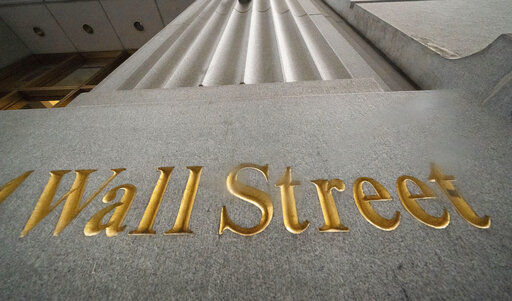NEW YORK — Stocks are drifting in early trading on Wall Street today, taking a pause from their sharp seesaw ride triggered by a swift rise in interest rates the last few weeks.
The S&P 500 was 0.1% lower after flipping between small gains and losses in the first half hour of trading. A day earlier, it surged to its best performance since June, nearly erasing its entire loss from the week before. The Dow Jones Industrial Average was up 49 points, or 0.1%, at 31,575, as of 9 a.m. Central time, and the Nasdaq composite was 0.3% lower.
For weeks, the market’s focus has been fixed on the bond market, where ultralow interest provided one of the main reasons for the stock market’s run to records despite the pain caused by the pandemic.
The yield on the 10-year Treasury eased a bit more this morning, down to 1.43% from 1.44% late Monday. It’s a reprieve following weeks of relentless rising. The 10-year yield had crossed above 1.50% last week, up from roughly 0.90% at the start of the year, and the zoom higher raised worries that more increases would destabilize the market.
Treasury yields have been climbing with expectations for economic growth and inflation, and such a rise makes borrowing more expensive for home buyers, companies taking out loans and virtually everyone else. That can slow economic growth. Higher rates also force investors to rethink how much they’re willing to pay for stocks, making each $1 of profit that companies are earning a little less valuable.
Technology and internet stocks bore the brunt of the rethink, in large part because their recent dominance left them looking even pricier than the rest of the market. But tech stocks were holding relatively steady today, part of subdued movements across the market.
Zoom Video Communications, the company whose software helps students and workers around the world talk with each other from a distance, rose 3.8% after reporting stronger revenue and profit for the latest quarter than Wall Street expected. Its forecast for the upcoming year also topped expectations.
The biggest gain in the S&P 500 came from Nielsen Holdings, whose ratings data helps companies choose which television shows to advertise on. It rose 4.2% after signing a deal with Roku to help measure audiences for streaming content.
On the losing side was First Republic Bank, which fell 2.7% for one of the largest losses in the S&P 500 after it said it will sell 1.75 million shares of stock to raise cash.
Today’s calm movements may prove short-lived. Several speeches and data reports this week could offer more light on the direction of interest rates, which are the dominating force on Wall Street now.
Lael Brainard, an advocate for lower interest rates on the Federal Reserve, will give a speech on monetary policy this afternoon. The central bank’s chair, Jerome Powell, is scheduled to speak on Thursday.
At the end of the week will be the government’s jobs report, which is typically the highlight economic report of every month. It also includes numbers for how much wages are rising across the economy, a key component of inflation.
Worries have been rising in recent months that inflation could be headed higher as COVID-19 vaccines get the economy back to strong growth and Washington gets close to delivering another $1.9 trillion in aid for the economy.
In European stock markets, Germany’s DAX returned 0.5%, and France’s CAC 40 rose 0.6%. The FTSE 100 in London added 0.8%.
In Asian trading, the Nikkei 225 in Tokyo declined 0.9%, the Hang Seng in Hong Kong shed 1.2% and stocks in Shanghai lost 1.2%. The Kospi in Seoul advanced 1% after the government reported factory production increased by more than expected in January.


